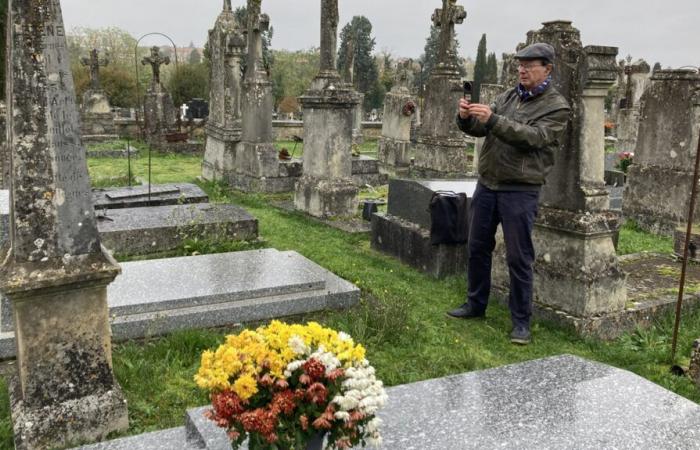It is not uncommon for Jean Moussu’s walks to take him through the alleys of the Chilvert cemetery in Poitiers. A neighbor of the site, the septuagenarian nevertheless has no taste for the morbid. Only history and heritage.
Since 2014, the retiree has photographed, with authorization (1), burials as part of “Save the tombs”, a collaborative project of the genealogy site Geneanet which is celebrating its tenth anniversary this year. “I feel like a memory smuggler. These tombs, some of which are destined to disappear, are sources of information. Their photographs indexed on the site allow us not to forget the history of these men and women. As quote (2) says, “you die twice. The first when you stop breathing, and the second, when someone says your name for the last time.” »
1,093 contributions recorded
An adventure initiated by a grandfather passionate about genealogy who pushed this original Picard to set out, firstly, in the footsteps of the ancestors of the woman he married in the mid-1970s. A Deux-Sévrienne we met while he was assigned by the State as a public works engineer to Loudun. A first position in Vienne, where he will also end his career after returning to Poitiers in 2001.
In 2014, on the occasion of the centenary of the First World War, Jean Moussu, also a member of the Poitevin Genealogical Circle (CGP), was particularly interested in war memorials. In Oise, in Noirémont, where part of his family comes from, then in Celles-sur-Belle, in Deux-Sèvres. “ To retrace the lives and journeys of these soldiers who fell for France, to make their sacrifices a little less anonymous. »
But it was while visiting another cemetery, in Nueil-les-Aubiers, that the man discovered a grave decorated with the photograph of two brothers who gave their lives for France and on which a placard indicates that it is dedicated to disappear under the procedure for resumption of funeral plots in a state of abandonment. “It is not a question of preventing town halls from managing their cemeteries but of preserving the memory of these soldiers. »
From then on, Jean Moussu set about photographing the graves for the Geneanet program. “More particularly those of soldiers from the two world wars, military personnel, personalities but also those which intrigue me, which are very old or are marked as being to be reprinted. »
To date, Poitevin has made 1,093 submissions of photos (3) from 54 different sites. “Two thirds of which concern Poitevin burials. » In the middle of the 8,000 graves in the Chilvert cemetery, the septuagenarian feels “at home” and “pays the visit”. Here, the last resting place of the deputy Gaston Hulin, there, that of the aviator lieutenant Jacques de Grailly, further, a small mausoleum housing the recumbent figure of the honorary canon of the Saint-Porchaire church, Camille Roulland or even, the modest tomb at the cross pierced with an oculus, of the grunt Jean Lavergne, soldier in Cairo and captain in Moscow, died in 1857. More than ever, the memories are from beyond the grave…
(1) A decree from the City of Poitiers prohibits the individual photography of graves in municipal cemeteries.
(2) Attributed for some to the artist Banksy, for others to the American writer Irvin Yalom.
(3) The Geneanet site indicates that the “Save our graves” program includes photographs and indexing of more than 7 million graves around the world.






